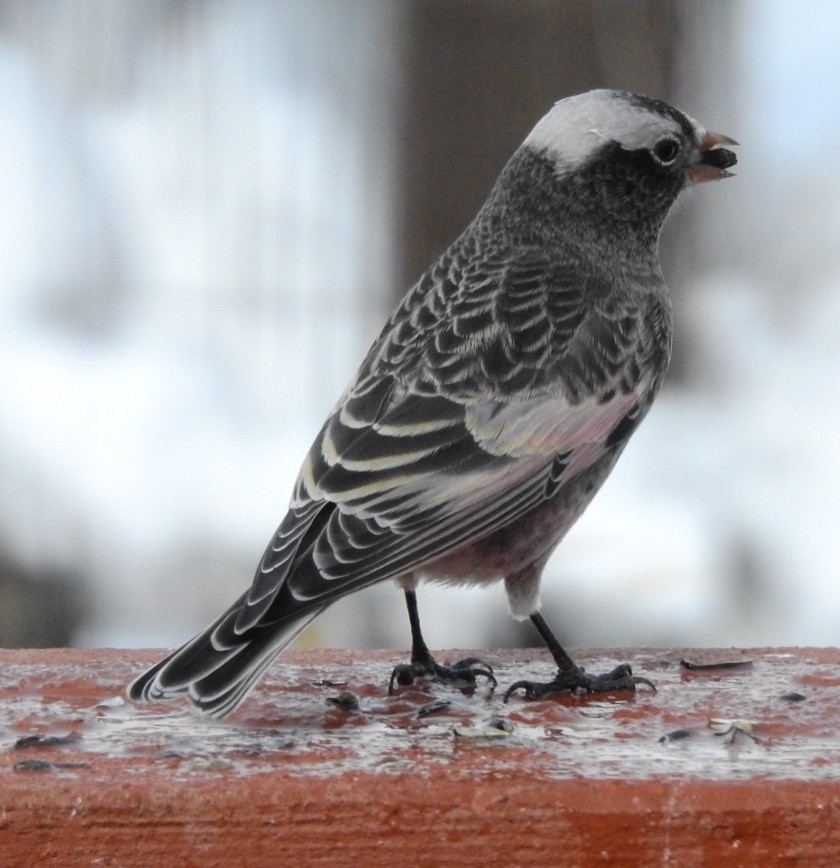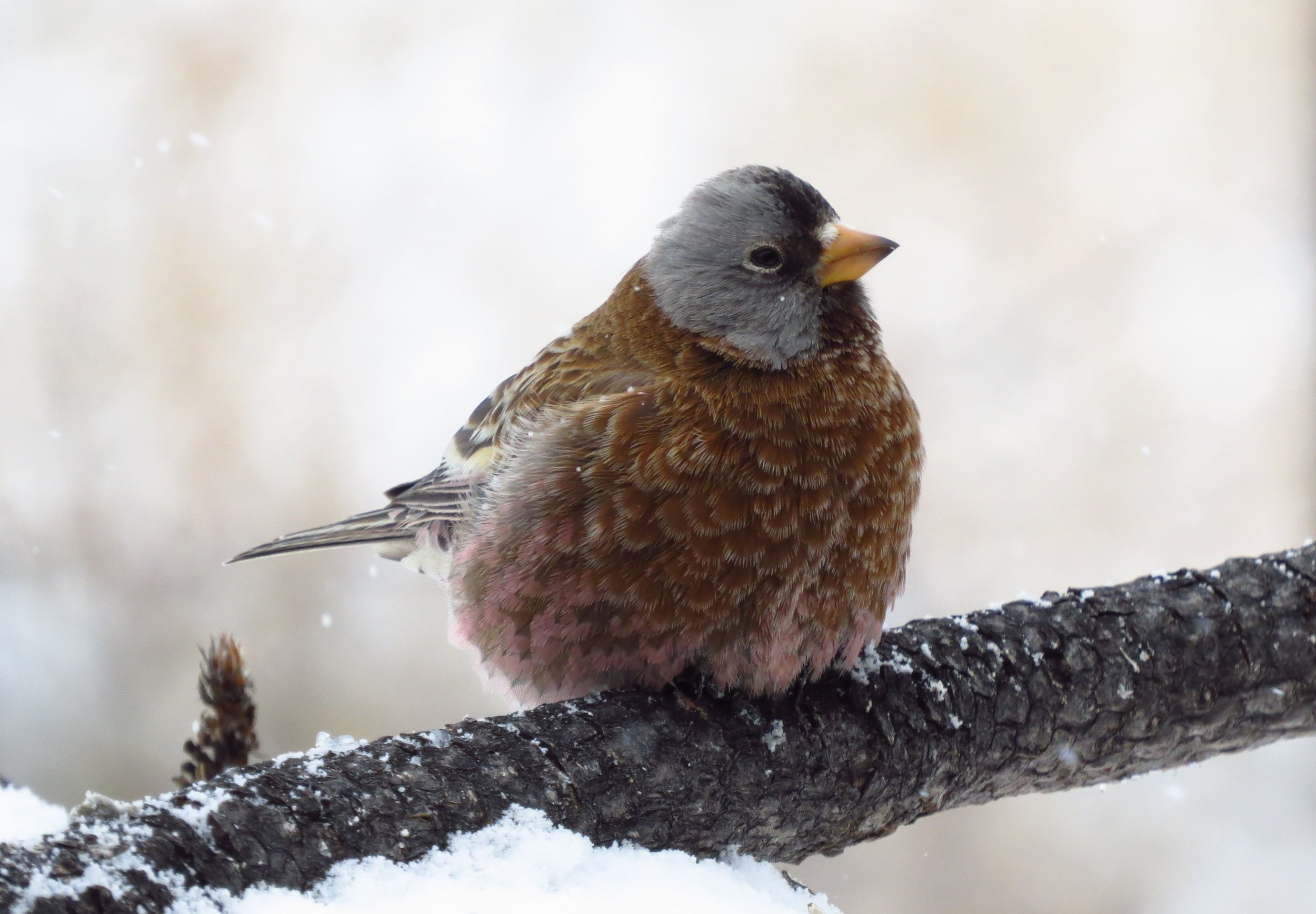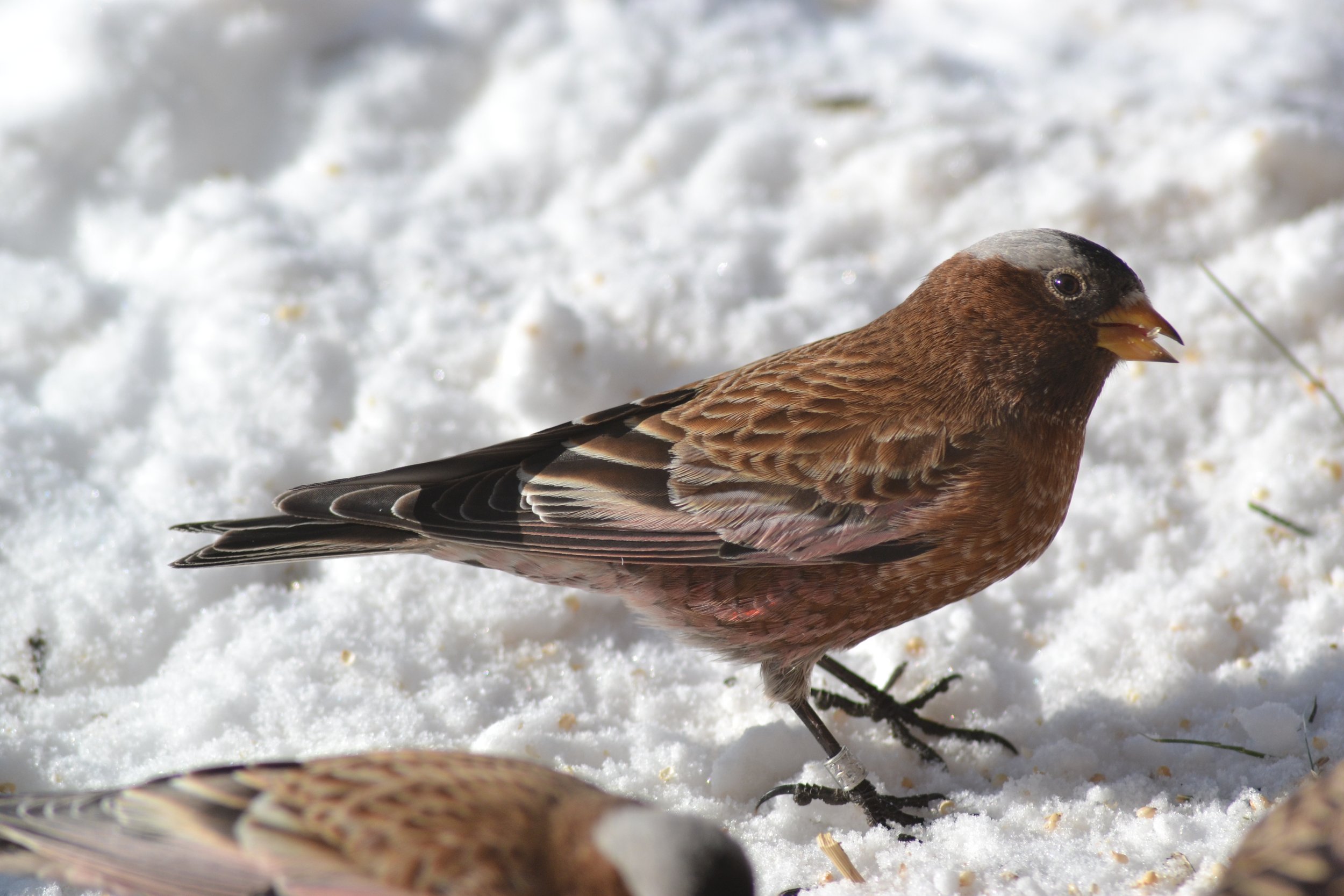Rosy-Finch Research
Members of CARRI have been working with these beautiful finches since 1999. Our research occurs in the winter, as all three species of rosy-finches come, often by the thousands, to the institute’s headquarters. The hungry birds are most often, seen in early morning, as the evenings are the longest time any diurnal species goes without eating.
Just after sunrise, the feeders are filled with sunflower seeds, and millet is spread across the deck under the feeders. As the birds arrive, they most often land on the feeders in ones and two’s. Shortly thereafter, the larger flocks land and devour the bird seed. Some days we can go though a coffee can full of bird seed every fifteen minutes.
There are three species of Rosy-finches in North America: The Black Rosy-finch, the Brown-capped Rosy-finch and the Gray-crowned Rosy-finch (pictured below in that order). The Brown-capped Rosy-finch nests here in the Colorado high country. In most years, we see the Brown-capped Rosy-finch finches at our feeders from October though late November. From mid-November through early February, the rosy-finch flocks consist more of Gray-crowned Rosy-finches and Black Rosy-finches with a few Brown-capped Rosy-finches sprinkled within. In late February, the Brown-capped Rosy-finches return as the Gray-crowned's and Black's move to their nesting grounds. The Gray-crowned Rosy-finches nest from parts of California and Idaho and Montana, north through Alaska. The Black Rosy-finches nest in parts of Utah, Wyoming, Idaho, Nevada, and Oregon.
Between January 2000 through May 2024, we have banded 5885 Rosy-finches, including.
4811 Brown-capped Rosy-finches.
886 Gray-crowned Rosy-finches
188 Black Rosy-finches
Recaptures since 2000
693 Brown-capped Rosy-finches
34 Gray-crowned Rosy-finches
0 Black Rosy-finches
One day in 2004, we had over 10,000 rosy-finches in the area at once. We know this because we banded 200 finches by 8:00 a.m. and shortly after, that we counted 50 birds on the feeders, and only one was banded.
*****Members of CARRI have the longevity record for the oldest Brown-capped Rosy-finch ever recorded in North America. He was originally banded at the research station on 11/9/2002 and recaptured there and released alive on 5/10/2008. Since the inception of our banding project, we have banded almost 5000 rosy finches!
Brown-capped Rosy-finch #1931-77742 was banded at the Institute on 1 May 2008 as an SY bird (meaning it hatched in 2007) and was recaptured at the institute on 4 April 2017, making this bird 10 years old!
This also makes it the oldest known wild Brown-capped Rosy Finch ever recorded!
Brown-capped Rosy-finch #2741-25462 was banded at the facility on 4/23/2016 as an ASY-M, and recaptured and released on 2/6/2019. It moved 182 miles southwest to be recaptured live and released in Ridgeway, Colorado.








![IMG_5660[1].jpg](https://images.squarespace-cdn.com/content/v1/551ad5a1e4b0a89d855c2c5e/1550190044052-AQMT8K9PW8N1TGBNZOG0/IMG_5660%5B1%5D.jpg)
